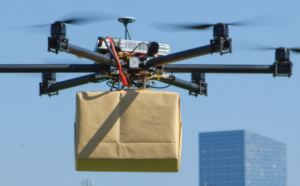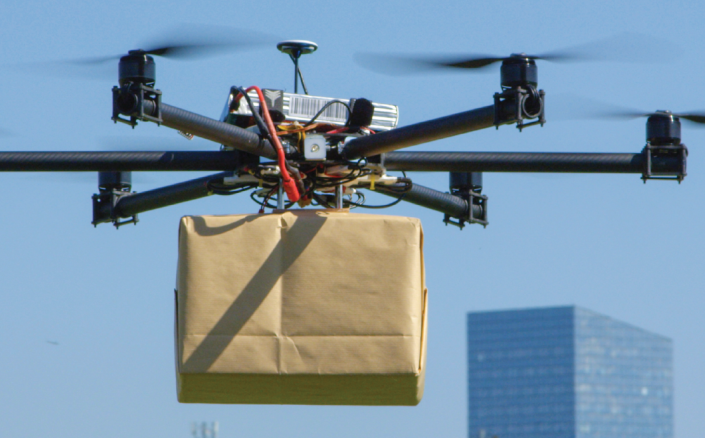Drone Technology in Disaster Management and Rescue Operations: Revolutionizing Emergency Response
In recent years, drone technology has emerged as a transformative tool in disaster management and rescue operations. With their ability to quickly access disaster-stricken areas, provide real-time data, and assist in search and rescue efforts, drones are playing an increasingly pivotal role in saving lives and mitigating the impact of natural and man-made disasters. This article explores how drones are revolutionizing emergency response, from damage assessment to delivery of essential supplies.
The Role of Drones in Disaster Management
Disasters—whether natural or man-made—often create chaotic, dangerous, and hard-to-reach environments for rescue teams. Drones, or unmanned aerial vehicles (UAVs), are proving to be indispensable in these situations, offering significant advantages in terms of speed, safety, and efficiency.
Key benefits of drone technology in disaster management include:
- Rapid Deployment: Drones can be deployed immediately following a disaster, allowing for quick situational assessments and coordination of response efforts.
- Access to Inaccessible Areas: Drones can reach areas that are dangerous, flooded, or structurally compromised, where human access is limited or impossible.
- Cost-Effectiveness: Drones are relatively inexpensive compared to traditional aerial survey methods (e.g., helicopters or planes), making them an affordable solution for disaster response.
- Real-Time Data Collection: Equipped with sensors and cameras, drones can capture high-resolution images, infrared footage, and thermal readings, providing vital information in real time to first responders.
Drone Applications in Disaster Management
Drones are used in a wide range of disaster scenarios to enhance the effectiveness of rescue operations. Here are some key applications:
1. Damage Assessment and Mapping
After a disaster, it’s crucial to quickly assess the extent of the damage to infrastructure, buildings, and landscapes. Drones equipped with high-resolution cameras and LiDAR (Light Detection and Ranging) sensors can quickly create 3D maps and detailed imagery of affected areas.
- Benefits: This data aids emergency response teams in understanding which areas are most affected and helps prioritize rescue and relief operations.
- Example: After the 2015 Nepal earthquake, drones were used to map the damage to villages and buildings, facilitating targeted aid distribution and infrastructure repair.
2. Search and Rescue Operations
Drones are invaluable in search and rescue missions, especially in areas that are challenging to access, such as collapsed buildings, mountainous terrain, or flooded areas. Thermal imaging cameras allow drones to detect heat signatures, making it easier to locate survivors trapped under rubble or stranded in remote locations.
- Benefits: Drones can cover large areas in a fraction of the time it would take rescue teams to do so on foot, improving the chances of finding and rescuing individuals in critical conditions.
- Example: During Hurricane Harvey in 2017, drones were deployed to search flooded neighborhoods, pinpointing locations of stranded people for rescue teams.
3. Delivering Essential Supplies
Drones can deliver critical supplies, such as food, water, medical kits, and communication equipment, to disaster-affected areas where roads and infrastructure are damaged or impassable.
- Benefits: Drones can provide immediate relief to those in need without the delays and risks associated with traditional delivery methods.
- Example: In the aftermath of the 2018 Indonesian tsunami, drones were used to drop essential supplies to remote villages that were inaccessible by road.
4. Monitoring and Surveillance
During ongoing disasters, drones play an essential role in monitoring the situation and providing surveillance of affected areas. For instance, drones are used to track the movement of wildfires, assess flood levels, or monitor hazardous materials in industrial accidents.
- Benefits: Drones provide real-time updates that can help emergency teams adjust their strategies and allocate resources more effectively.
- Example: In wildfire management, drones are used to monitor fire spread and detect hot spots, allowing firefighters to focus their efforts on the most dangerous areas.
Advancements in Drone Technology for Disaster Response
Drone technology continues to evolve, enhancing its capabilities for disaster management and rescue operations. Key advancements include:
1. Increased Flight Time and Range
Advancements in battery technology and power efficiency have significantly increased the flight time and range of drones. This is crucial in disaster situations where drones may need to cover large areas and operate for extended periods.
- Example: Some drones now have the ability to fly for up to 90 minutes on a single charge, enabling long-duration missions.
2. Autonomous Flight and AI Integration
Many modern drones are equipped with autonomous flight capabilities, allowing them to navigate complex environments without human intervention. Artificial intelligence (AI) algorithms help drones avoid obstacles, plan optimal flight paths, and analyze data in real time.
- Example: AI-powered drones are being developed to autonomously detect and classify objects, such as identifying survivors or damaged infrastructure based on imagery.
3. Swarm Technology
Swarm technology enables multiple drones to work in coordination, sharing data and autonomously performing tasks together. In disaster management, swarm drones can cover vast areas more efficiently, perform complex surveillance tasks, and assist with large-scale search efforts.
- Example: In large-scale rescue operations, a fleet of drones can simultaneously monitor different regions, track survivors, and even deliver supplies in real-time.
4. Integration with Other Technologies
Drones are increasingly integrated with other technologies such as ground robots, satellite systems, and communication networks, creating a seamless, multi-layered disaster response system.
- Example: Drones can be used alongside ground-based robots to perform search and rescue in collapsed buildings, while satellite data helps optimize drone flight paths.
Challenges and Considerations for Drone Use in Disaster Management
While drones offer significant benefits in disaster management, there are several challenges and considerations:
- Regulatory and Airspace Restrictions: Drones must be operated within regulated airspace, and during large-scale disasters, airspace can become congested, limiting drone operations.
- Weather Conditions: Extreme weather, such as strong winds, rain, or snow, can hinder drone flight and performance.
- Data Security and Privacy: The vast amount of data collected by drones must be protected to ensure privacy and security, especially when dealing with sensitive locations or individuals.
- Training and Expertise: Proper training is necessary for drone operators to ensure safe and effective use in high-stress disaster environments.
The Future of Drone Technology in Disaster Management
The future of drone technology in disaster management is bright, with ongoing advancements in AI, machine learning, and drone autonomy. As these technologies evolve, drones will become even more indispensable in disaster response, enabling faster, safer, and more efficient rescue operations.
The continued integration of drones with other emergency response technologies, as well as the development of new models for various disaster scenarios, will further solidify their role as vital tools in saving lives and reducing the impact of disasters.
In conclusion, drones are no longer just a futuristic concept but a present-day reality transforming the way we respond to and manage disasters. With their versatility and rapidly advancing capabilities, drones will continue to be at the forefront of disaster management and rescue operations for years to come.

Also Read :
- The Role of Nanotechnology in Revolutionizing Material Science
- Advances in MRI Technology: What’s Next for Medical Imaging?
- How MRI Technology is Transforming Medical Diagnostics
- Innovations in Renewable Energy: What’s Next for Green Technology?
- How Technology is Revolutionizing Education in South Africa
